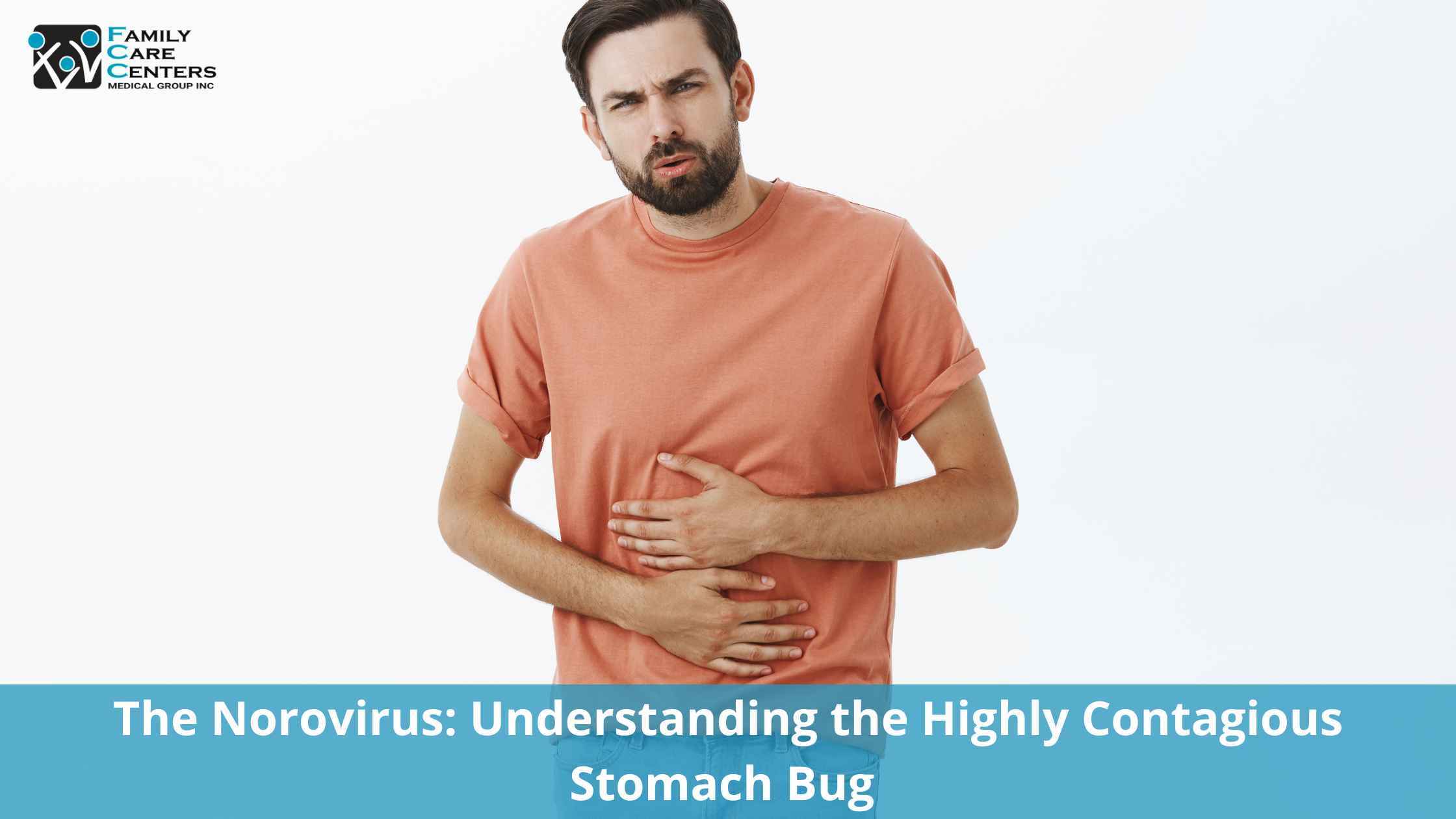

Fountain Valley Urgent Care Permanently Closed. We’re Here to Care for You at Our Other Locations.

Norovirus is a highly contagious virus that causes stomach flu and diarrhea. Understanding the virus is vital for prevention and managing complications. Children, older adults, and those with weakened immune systems are at higher risk. Although elderly individuals are at the highest risk for severe consequences, the infection does carry a 1 in 14 mortality rate.
Norovirus spreads through person-to-person contact, contaminated food and water, and contact with contaminated surfaces. While often seen during the winter months, it can occur year-round.<.p>
Fortunately, practicing good hygiene and seeking medical attention for severe symptoms can control its spread.
Norovirus is not a single germ but a group of related viruses that cause gastroenteritis, aka stomach flu. Currently, several types of norovirus have been identified, some of which are carried by animals such as mice, cows, and pigs. These distinct genogroups within the norovirus family highlight the diversity and multiple sources of infection, emphasizing the need for comprehensive surveillance and preventive measures to control its spread effectively.
The symptoms of norovirus infection typically manifest within 12 to 48 hours after exposure. Common symptoms include:
Norovirus spreads easily and rapidly through several routes. The primary modes of transmission include:
Moreover, norovirus is highly contagious, and even a small amount can cause infection. This contributes to the virus's rapid spread in closed environments such as schools, hospitals, cruise ships, and nursing homes.
To prevent norovirus spread, it is vital to prioritize good hygiene. This involves frequent handwashing with soap and water, particularly after using the restroom and before handling food. Regularly disinfecting surfaces and objects that may harbor the virus is crucial. Infected individuals should refrain from food preparation or caregiving until fully recovered to avoid transmitting the virus.
There is no specific antiviral treatment for norovirus. Most cases of norovirus infection resolve on their own within a few days without medical intervention. The primary focus of treatment is to alleviate symptoms and prevent dehydration. Here are some recommended treatment options:
It's worth noting that antibiotics are ineffective against norovirus since it is a viral infection, not a bacterial one. Prevention through proper hygiene practices and adherence to food safety measures is crucial in minimizing its spread.
Norovirus can cause significant discomfort and distress due to symptoms like vomiting and diarrhea. While most people recover without complications, it can be more severe and potentially dangerous for vulnerable populations.
Norovirus is commonly found in settings with close contact and shared facilities, such as schools, cruise ships, nursing homes, childcare centers, hospitals, and restaurants. It can also be present in contaminated food and water sources.
Anyone can contract norovirus, but certain individuals are at higher risk of complications, including young children, older adults, and people with weakened immune systems or underlying health conditions.
Foods commonly associated with norovirus outbreaks include raw or undercooked shellfish, fruits and vegetables that have been contaminated during handling, and foods prepared by infected individuals who did not practice proper hygiene.
When experiencing norovirus symptoms, knowing when to seek medical attention is important. For precise guidance regarding norovirus, walk into any of our urgent care clinics in Irvine Woodbridge Walk-in Urgent Care, Fountain Valley Urgent Care, or Costa Mesa Urgent Care, CA, for immediate care. Immediate medical care is necessary if there is blood in vomit or stool, severe abdominal pain, or if you are an older adult or infant or have a weakened immune system. We offer expert evaluation and management to ensure prompt recovery and prevent complications.